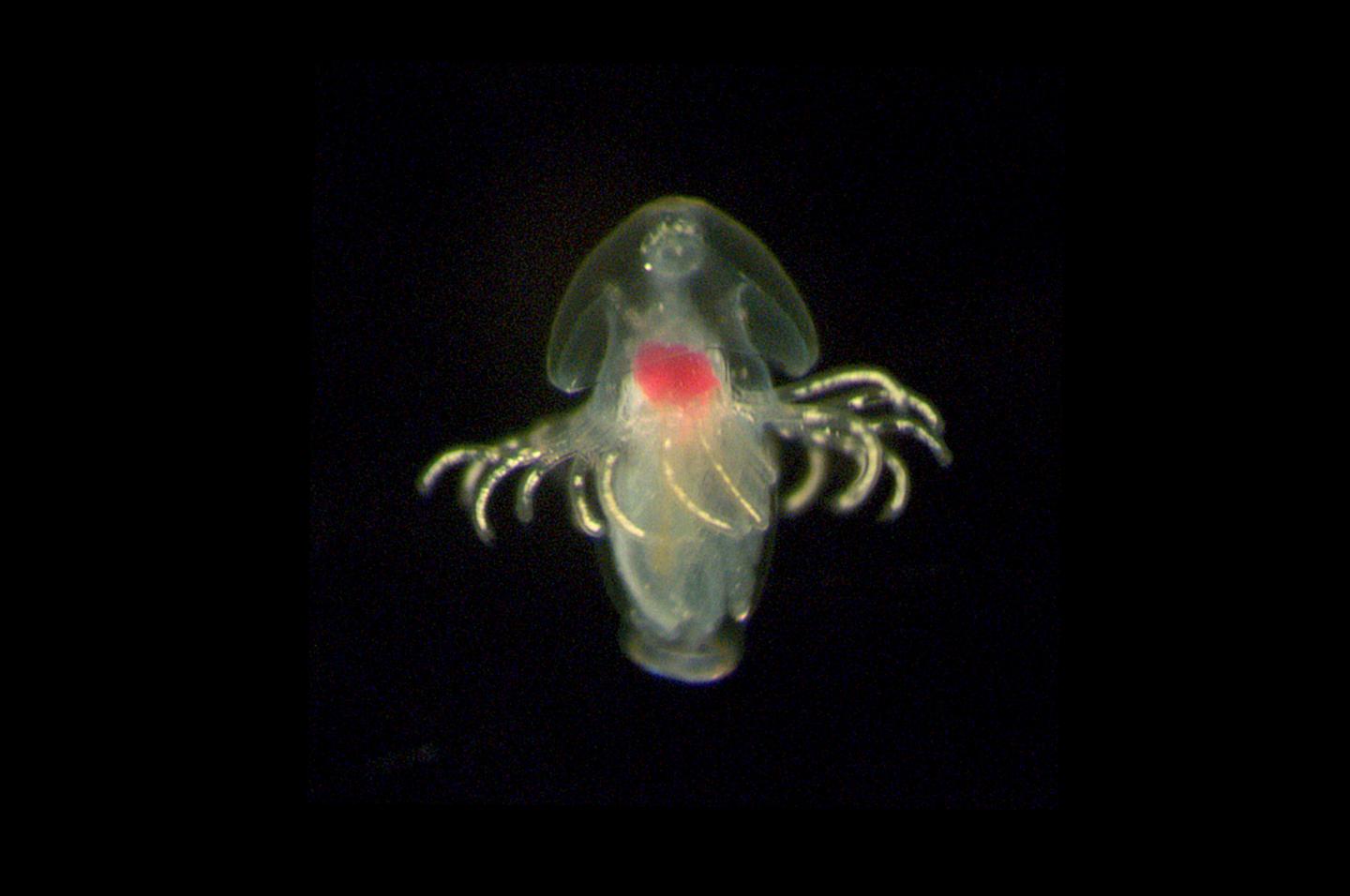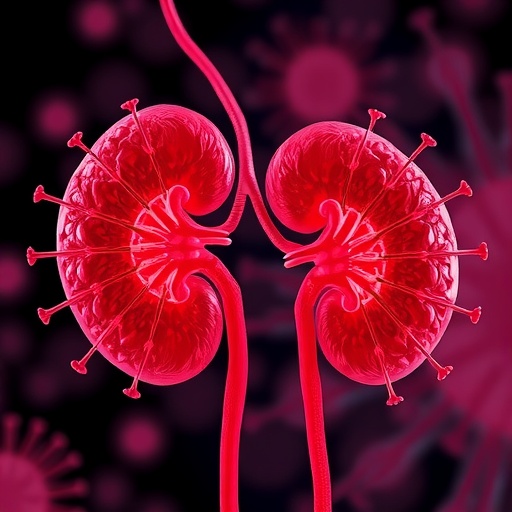Mysterious larvae found in Panama’s two oceans

Credit: Credit: Michael Boyle
Under the microscope, sea water reveals the larval stages of little-known marine creatures called phoronids (horseshoe worms), but finding their parents is another story. Although such fanciful larvae caught the eye of scientists studying plankton–the tiny, drifting plants and animals in the world’s oceans–as long ago as the 1800s, there are only about 15 species of phoronids known worldwide, based on adult specimens. A study of phoronid larvae published this week by scientists at the Smithsonian Tropical Research Institute (STRI) in Panama has detected eight potentially new species.
“The global diversity of small, rare marine animals like phoronids is grossly underestimated,” said STRI staff-scientist Rachel Collin. “We don’t know what animals are out there, and we know even less about what their role might be in the world’s oceans.”
Because phoronid larvae swim and drift in seawater, they are much easier to sample than their adult forms, which live on the sea floor within sands, sediment or rubble. And the larvae do not look like the adults, making it difficult to tell which larva belongs to which adult without doing a sort of paternity testing: comparing larval DNA sequences to the DNA of their potential parents.
Named for the Egyptian goddess Phoronis, tubular adult horseshoe worms anchor their bodies to rocks or corals and wave a crown of ciliated tentacles to capture tiny food particles. To reproduce, their eggs and sperm unite to create embryos that hatch as swimming larvae, which then become members of the microscopic plankton.
The larvae have cylindrical bodies topped with a ring of tentacles and a large hood that serves to capture food. Many are decorated with yellow pigment spots and within some it is possible to see reddish or pinkish patches of blood cells through their translucent bodies. Eventually they descend to the seafloor, develop into adults and complete their life cycle, considered the most common cycle in the animal kingdom.
Scientists collected plankton from the Bay of Panama on the Pacific Coast and Bocas del Toro on the Caribbean coast. By examining plankton with a stereomicroscope, they found more than 50 phoronid larvae; 23 from the Pacific and 29 from the Atlantic. Using a genetic technique called barcoding based on DNA sequencing, they were able to distinguish three distinct phoronids in the plankton from the Bay of Panama and four others from the Caribbean.
The DNA of particular genes from each of these animals was different from anything recorded in GenBank, a global collection of DNA from more than 300,000 organisms, suggesting that these larvae may belong to species that are new to science. However, finding the adults of these species may take years, especially since very few scientists study horseshoe worms.
“Because of the cryptic lifestyles of phoronids, the matching adult worms may never be found, yet the presence of their larval forms in plankton confirm that they are here, established and reproducing,” said co-author Michael J. Boyle, previously, a Tupper postdoctoral fellow at the STRI and now a staff biologist and the principal investigator of the Life Histories Program at the Smithsonian Marine Station in Fort Pierce, Florida.
At STRI’s Bocas del Toro Research Station on the Caribbean, Collin, who is the station director, organizes a series of Tropical Taxonomy Training courses, intended to bring researchers who specialize on these and other fairly unknown marine organisms to Panama, where they almost always discover new species and pass their knowledge on to students. They produce a series of YouTube videos to teach students how to capture, preserve and identify new species.
###
The Smithsonian Tropical Research Institute, headquartered in Panama City, Panama, is a unit of the Smithsonian Institution. The Institute furthers the understanding of tropical nature and its importance to human welfare, trains students to conduct research in the tropics and promotes conservation by increasing public awareness of the beauty and importance of tropical ecosystems. Website: http://www.
Reference: Collin, R., Venera-Pontón, D.E., Driskell, A.C. et al. 2019. Documenting Neotropical diversity of Phoronids with DNA barcoding of planktonic larvae. Invertebrate Biology. Doi:10.1111/ivb.12242
https:/
https:/
Media Contact
Elisabeth B. King
[email protected]
Related Journal Article
http://dx.




